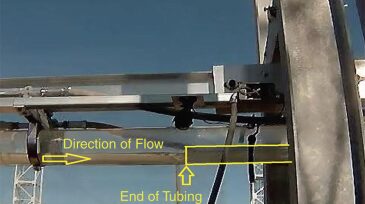Flow assurance
This paper discusses a comprehensive hybrid approach that combines machine learning with a physics-based risk-prediction model to detect and prevent the formation of hydrates in flowlines and separators.
This paper explains that the discovery of specific pressure trends, combined with an unconventional approach for analyzing gas compositional data, enables the detection and prediction of paraffin deposition at pad level and in the gathering system.
This paper presents an approach to subsea hydrate-risk management based on the understanding that some crudes have induction properties that delay hydrate formation even when the pressure and temperature conditions reach the hydrate thermodynamic region.
-
The papers presented here, including the additional reading papers on the potential novel applications of subsea tieback technology, focus on developing new analytical tools and new materials while providing safe, cost-effective, and reliable operations for flow assurance.
-
This paper describes a smart management system used for retrieving and evaluating all flow-assurance-related data for more than 700 of the operator’s onshore and offshore wells.
-
This paper describes a material designed to interact specifically with highly corroded and weathered pipe to enable in-place application and refurbishment.
-
This paper presents the results of an experimental and modeling study that demonstrates the existence of severe slugging in systems with upward-inclined lateral flow paths, such as a toe-down well.
-
Internal corrosion has caused ADNOC to suffer loss of containment in oil flowlines in a giant onshore field. This paper describes the successful 5-year field trial program and confirmation that HDPE liner application in carbon steel pipe can be a cost-efficient way to mitigate internal corrosion.
-
A common hydrate-management strategy involves the use of large volumes of thermodynamic inhibitors (THIs) to operate outside the hydrate-stability region.
-
The complete paper investigates gas-hydrate inhibition in a simulated offshore environment using a plant extract (PE) as a local inhibitor.
-
This paper summarizes historical advancements in low-dosage hydrate inhibitors (LDHIs) over the past 2 decades, discusses their advantages and limitations, and their selection criteria.
-
A new enabling technology known as electrically heat-traced flowline (EHTF) will be used to enable system startup and shutdown and to maintain production fluids outside of the hydrate envelope during steady-state operation.
-
SponsoredParaffins present in crude oil can gel or precipitate, which can cause pipeline and production system blockages. Dow’s ACCENT wax inhibitors are high-active, aqueous-based chemistry, that efficiently control paraffin deposition in pipelines.













